I’m not a believer in photographic boxes or restrictions, but I was intrigued by the question, “What is the prototypical focal length for landscapes?”
Just to calibrate myself, I went through all 40 images in Ansel Adams’ Examples. I threw out the ones the weren’t landscapes (surprisingly, there were a lot of those), and the one or two for which he omitted lens and format information. I put the result in a table:
Excel has a ordered histogram (Pareto) graph that I’d never used before. I decided to try it out on this data.
You can see that the bulk of the images were made with equivalent focal lengths between 40 and 45, and 30 and 35mm. It is unlikely that AA didn’t make any images with equivalent focal lengths between 35 and 40mm because he didn’t like the look of that range. It is more likely that he didn’t have lenses in that range readily available. If you look at the actual, not the equivalent focal lengths, you’ll notice that 300mm and 310mm on an 8×10 were used to make 6 images. Indeed, it is possible that there was actually only one lens involved, and we’re looking at the results of AA’s — and my — English/metric conversion rounding; he reported the focal lengths sometimes in English and sometimes in metric units.
The two Hasselblad images in this sample are focal length outliers on both the high and the low end. If we take them out we get a Pareto graph like this:
Why are the Hasselblad images outliers? On the wide side, not because of lens availability, at least for 4×5 and 5×7 cameras. There are 8×10 images with lenses as short as 28mm equivalent. That may have been the shortest lens that Ansel had access to when he was using the 8×10, ahem, heavily, although wider lenses were certainly available in the 1980s, when I was using an 8×10 (I had a Schneider 150 that was quite a nice lens, although it didn’t get as much use as the 360), Would Ansel have gone longer than 575mm (77mm equivalent) on his 8×10 if those lenses hadn’t been large and hard to deal with? Maybe; he used a 250 on his ‘blad, a 135mm equivalent lens that would have had to have been more than 1000mm on the 8×10 to get the same angle of view.
I have been making landscapes for the past four months using lenses no shorter than 85mm, and as long as 280mm. Here are a few.
I’d be happy to use even longer lenses for landscapes, but even with a 24x36mm sensor, they start to get cumbersome, and atmospheric disturbances begin to be a serious problem (that can happen even with the 280).
On the short end, I have used lenses as short as 15mm for landscapes, although finding the usually-necessary strong foreground isn’t always in the cards. Fish-eye landscape? Maybe I’ll try that some day.
So, for me, the usefulness of the universe of immense range of focal lengths now available for the full frame photographer is limited by my compositional ability on the short end, and by convenience and technical issues on the long end.
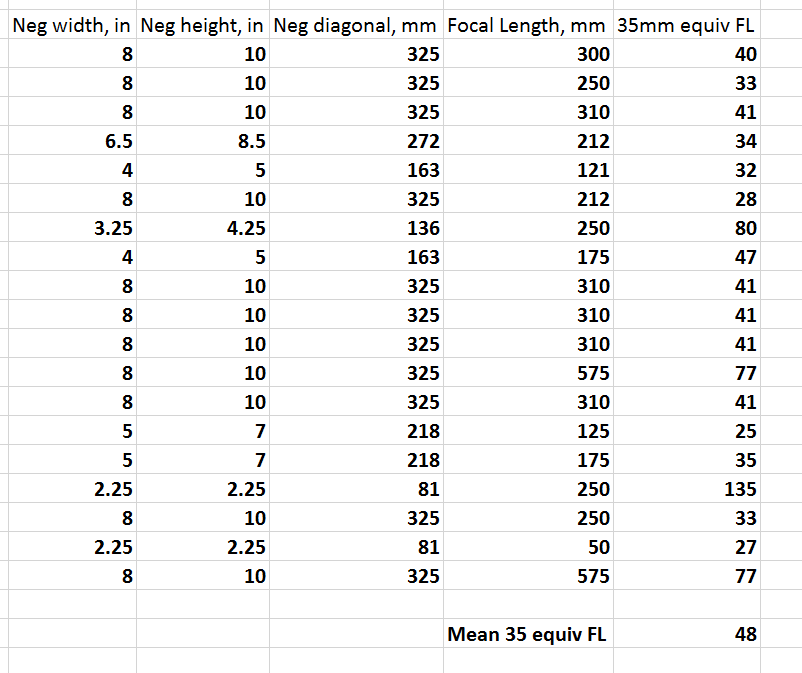
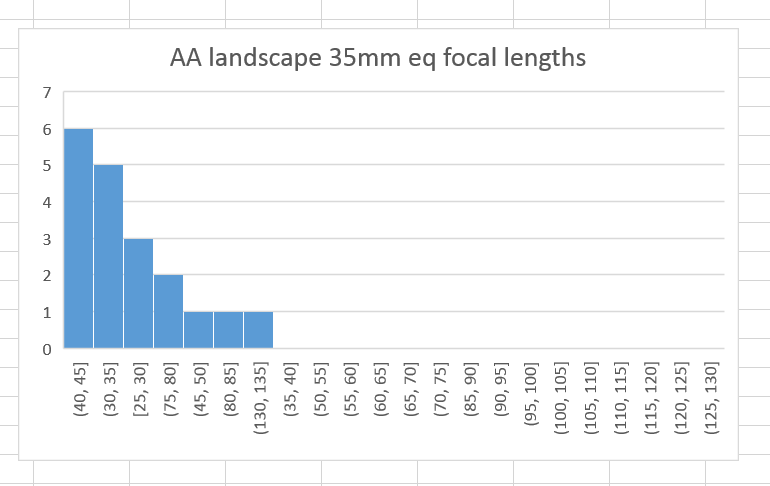
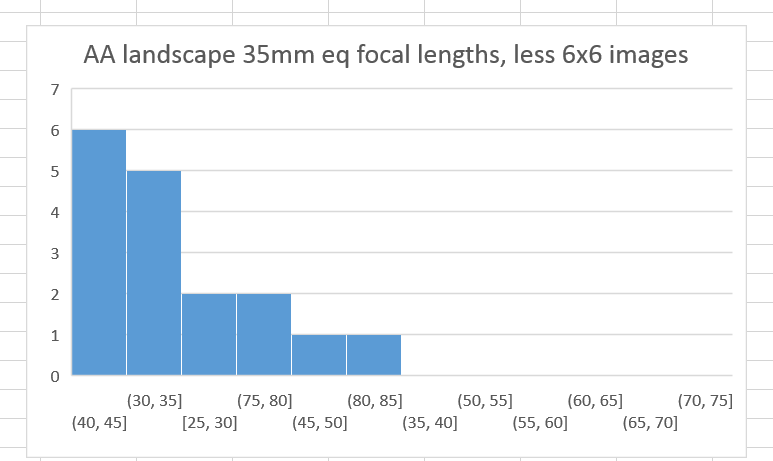
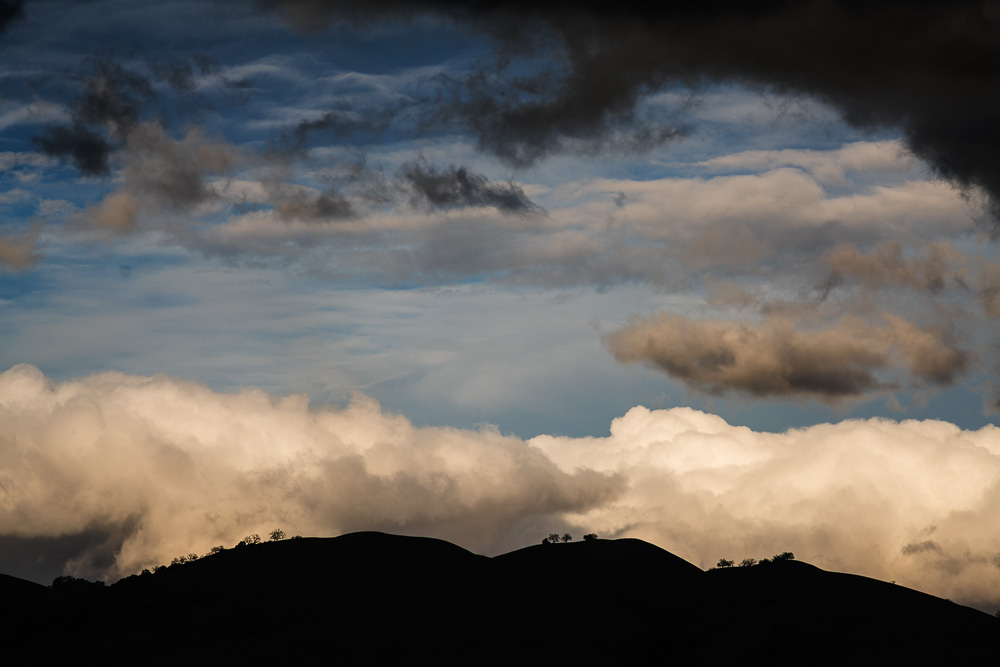
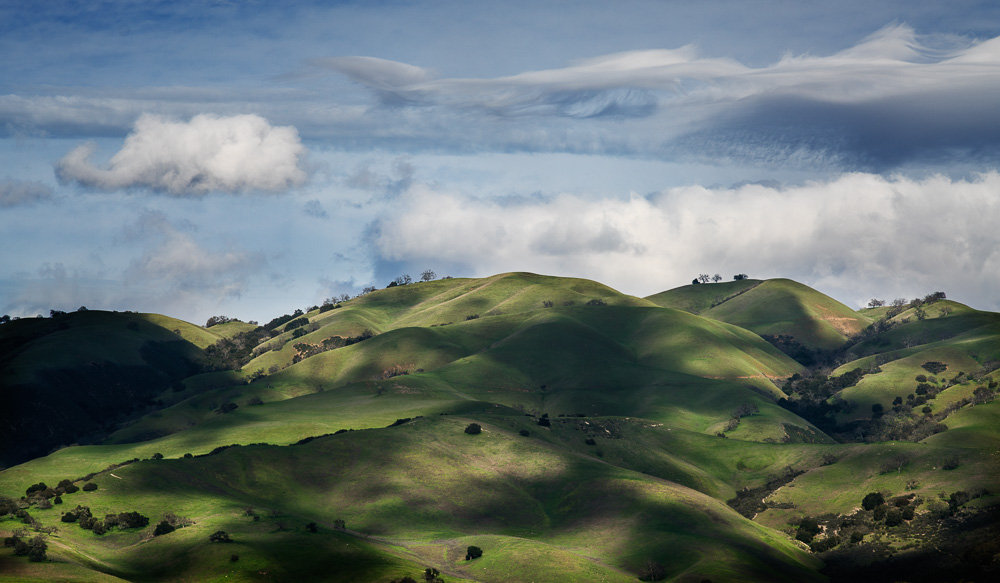
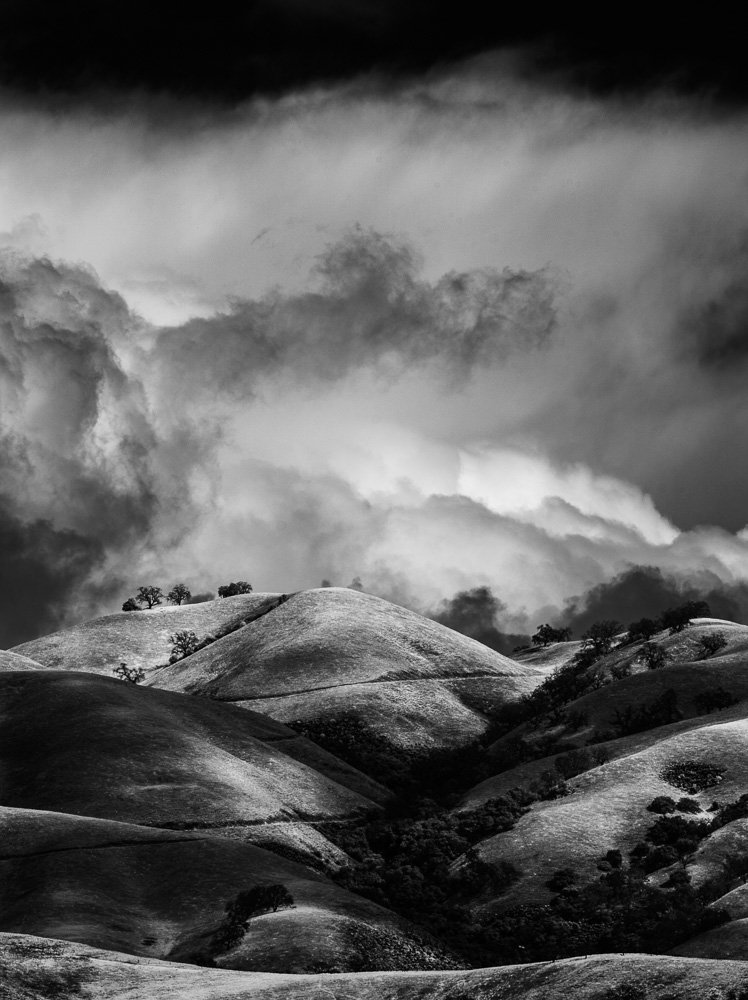
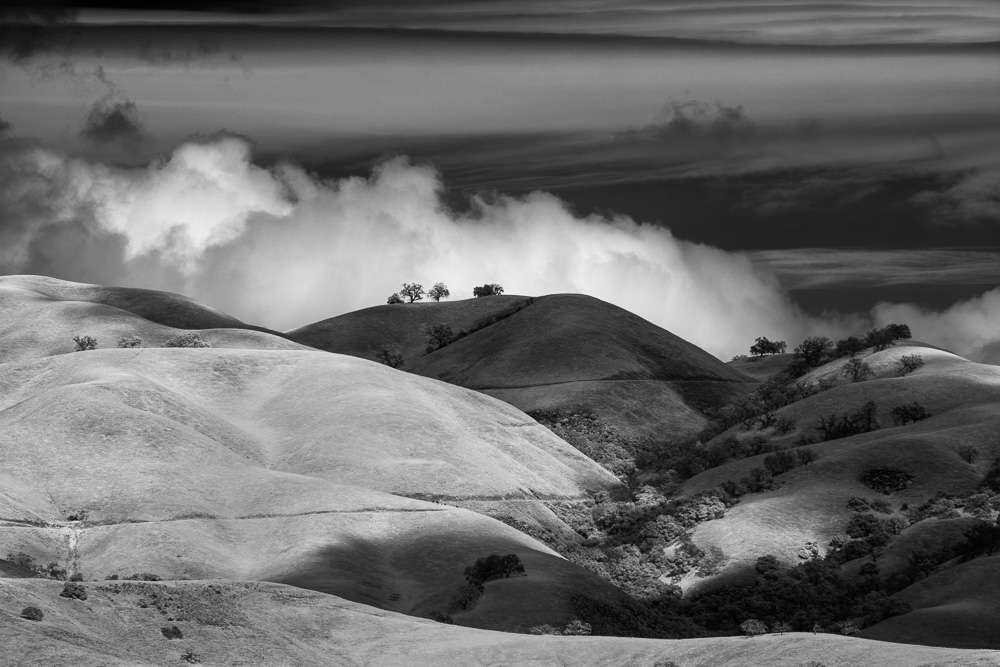
Saint Ansel as we call him, was out west, mostly. For those of us in the east, quite often heavily forested, I would expect shorter focal lengths to be more common. Then again, maybe it is style differences? What do you think, Jim?
Good point, Herb. I don’t know of a source similar to Examples for an east coast photographer of that era.
Thanks for the post. Im always interested in the preponderance of particular focal lengths and their relationship to the history of photography. There’s a lot of interesting things to consider here with HCB and Winogrand and their choice of focal length as well.
A small quibble, but the diagonal of 8×10 film is usually more like 310-315mm as the film holder masks off about an eighth of an inch or so on each side. Probably won’t change the math much with 8×10 but maybe the effect would be more noticeable on the smaller formats. Just a thought.
Also I’d be interested to know if separating horizontal from vertical compositions changes things at all. I’ve noticed tendencies to use longer focal lengths with vertical compositions than their horizontal counterparts.
Interesting! Thanks for doing this. Having an average of 48mm was very fascinating after reading in Ansel’s book the camera that he finds the normal range (@50mm-) of lenses difficult and basically he doesnt like or often use them. I would say that the 135mm FL equiv. in the data is an outlier and should be removed, which would then give the mean FL a 43mm which is a little wider and possibly more accurate.